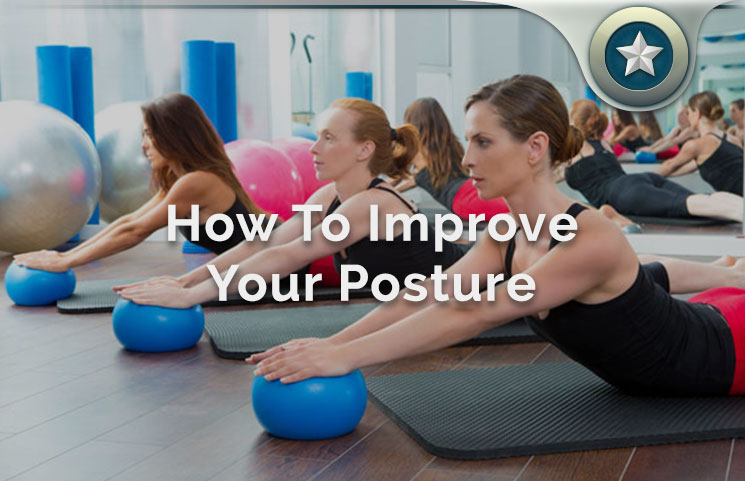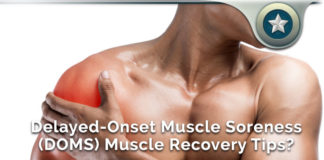Some people believe that you can learn a lot about a person from their posture, and whether or not this is true, you can definitely expect it to affect people’s opinions of you – especially when you’re making a first impression.
One thing your posture can definitely say about you is how well your muscles and joints are doing their job. Here’s a step by step guide on how to check up on your particular posture, what it says about your body, and how to fix it.
Picture in your mind a person in your mind who is standing with their head held up, their chest out, and their back straight. This posture probably gives you an impression of someone who is confident, powerful, and who can seemingly take on anything.
How you feel can have a major impact on your posture, and it’s surprising how rarely people put enough importance on improving their posture when it’s just a primary feature of their appearance and their health. You might feel like the back pain you’ve been dealing with for years or the extra slump in your neck is normal, but it doesn’t have to be.
Going through life with poor posture is more harmful to you than you think. The ligaments and muscles in your body are meant to perform in a certain way, and if they are out of balance then you can end up dealing with a host of problems, such as:
- Headaches
- Fatigue
- Stiffness
- Trouble Breathing
- Digestive Problems
- Sciatica
- Carpal Tunnel Syndrome
- Neck, Back, and Shoulder Pain
- Nerve Compression
- Back, Hip, Knee, or Foot Injury
- Muscle Atrophy
The good news is…it’s possible to fix your poor posture in order to avoid or even reverse many of these problems. If you know enough about proper posture and exactly how your own posture differentiates from the ideal, then it is easy to perform specific exercises to correct your deviations and get closer to a healthier balance between your joints and muscles.
This healthy balance can help you reach proper alignment so that you can stand up straighter, have more effective muscles, and lift heavy objects more safely. Looking and feeling better is just icing on the cake.
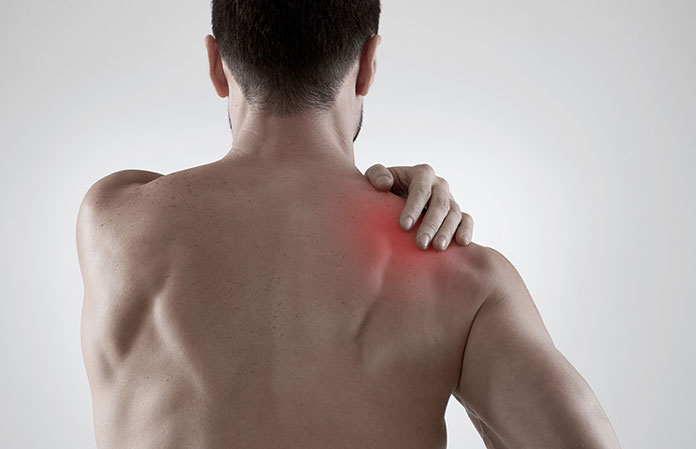
How To Correct You Posture
You can’t fix a problem if you don’t know exactly what the problem is. Many people think that poor posture is caused by a misalignment in the joints, but it is more often caused by an imbalance in the muscles, because it is your muscles’ job to hold everything in place. If any one group of muscles is either to weak or too tight, then your posture can be affected.
If you have a habit of slumping forward, for example, then it is likely that either your back muscles are two weak or your pectoral muscles are too strong. If you experience both, then you will be sure to see a pronounced slump that rotates your shoulders more forward and out of their proper alignment.
When you have an unevenness like this, other muscle groups have to work overtime to compensate. This is why you will experience fatigue, tension, and pain in your muscles as they are trying to compensate. The best way to fix these differences is to stretch out the muscles that are too tight and strengthen the muscles that are weak or loose.
Posture Evaluation
The first step to fixing any problem is knowing exactly what that problem is. Unless you’ve been keeping a close eye on your posture or you’ve done one of these evaluations on yourself before, then it’s likely that you really have no idea exactly what your posture looks like or which muscle groups to target in order to fix it.
Here is a posture evaluation that you can use to determine whether you posture may need some work and what you can do to make it better.
When you are performing this evaluation, you will need to wear clothes that are form-fitting. This is so that you can see exactly how your body is aligned without any bagginess or extra material getting in the way.
Stand barefoot in front of a full-length mirror or a friend with a camera, and stand up straight but remain comfortable. Stand the way you normally would and don’t try to pull yourself in a posture that you think you should have.
To really make sure you get an accurate picture of your posture, walk in place a few paces with your eyes closed. Doing this will help your feet turn out or in as they naturally would. Once you have stopped and are standing still, look in the mirror or have your friend take a picture. You will want to get a good idea of what this looks like from the front, sides, and back.
What Does Proper Posture Look Like?
If you have proper posture, every major set of joints should be lined up one on top of the other. Your hips will be lined up directly over your heels, your ribs will be over your hips, and your ears will line up over your shoulders. If your body is perfectly aligned like this from all directions, you’re good to go.
Improper Postures
If you’re like most people, then your body doesn’t line up perfectly with the description above. There are a variety of differentiations that may be causing it. Here is a list of each differentiation, along with the exercises that you can follow to adjust them back to the proper alignment.
Differentiation 1: Sway Back
Sway Back occurs when your hips come forward too far and end up sitting in front of your rib cage instead of beneath it.
Which muscles are too tight?
- Gluteus Maximus And Medius
- Erector Spinae
- Hamstrings
- Quadratus Lumborum
Stretches to loosen tight muscles:
- Seated Glute Stretch
- Runner's Stretch
- Hamstring Stretch
- Lying Crossover
- Seated Glute Stretch
- Hamstring Self-Myofascial Release (Foam Rolling)
Which muscles are too weak?
- External Obliques
- Iliopsoas
- Rectus Femoris
Exercises to strengthen weak muscles:
- Hanging Leg Raise
- Exercise Ball Pull-In
- Scissor Kick
- Cocoon

Differentiation 2: Lower-Cross Syndrome
Lower-Cross Syndrome occurs when you lower back curves in too much and your pelvis tilts forward.
Which muscles are too tight?
- Erector Spinae
- Iliopsoas
Stretches to loosen tight muscles:
- Hug Knees To Chest
- Kneeling Hip Flexor
- Pyramid Stretch Over Ball
- Quadriceps Self-Myofascial Release
- Quadriceps Stretch
Which muscles are too weak?
- Gluteus Maximus
- Abdominals
Exercises to strengthen weak muscles:
- Frog Sit-Up
- Exercise-Ball Hip Bridge
- Single-Leg Glute Bridge
- Pelvic Tilt To Bridge
- Leg-Elevated Crunch
Differentiation 3: Rounded Shoulders
Rounded shoulders can be seen when the shoulders are too far forward and sit in front of the ears.
Which muscles are too tight?
- Pectoralis Major
- Pectoralis Minor
Stretches to loosen tight muscles:
- Chest Stretch On Stability Ball
- Dynamic Chest Stretch
- Elbows-Back Stretch
- Front Deltoid Stretch
- Chair Upper-Body Stretch
Which muscles are too weak?
- Lower Trapezius
- Rotator Cuff
- Serratus Anterior
Exercises to strengthen weak muscles:
- Back Fly With Band
- Seated Cable Row
- Rear-Delt Row
- Shoulder External Rotation
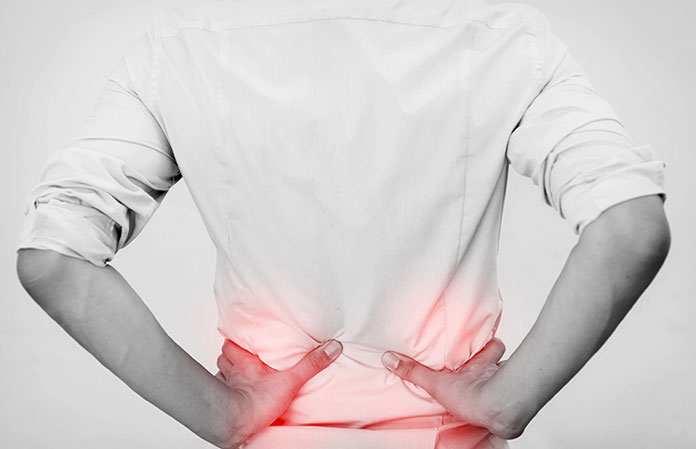
Differentiation 4: Forward Head
The forward head differentiation can be seen when the ears are in front of the shoulders in step of sitting above them.
Which muscles are too tight?
- Upper Trapezius
- Neck Extensors
- Levator Scapula
Stretches to loosen tight muscles:
- chin to chest
- Neck self-myofascial release
- sternocleidomastoid stretch (with palms up, reach your arms as far back as possible while turning your head to look to one side)
Which muscles are too weak?
- Neck Flexors (Muscles In Front Of The Neck That Tilt The Head Forward)
Exercises to strengthen weak muscles:
- Isometric Front-Neck Exercise
Differentiation 5: Upper-Cross Syndrome
Upper-Cross Syndrome can be seen as rounded shoulders with a very severe forward curve.
Which muscles are too tight?
- Levator Scapula
- Neck Extensors
- Trapezius
- Pectoralis Major And Minor
Stretches to loosen tight muscles:
- Chin To Chest
- Neck Self-Myofascial Release
- Elbows-Back Stretch
- Front-Delt Stretch
- Dynamic Chest Stretch
- Chest Stretch On Stability Ball
- Chair Upper-Body Stretch
Which muscles are too weak?
- Rhomboids
- Rotator Cuff
- Serratus Anterior
- Lower Trapezius
- Deep Neck Flexors
Exercises to strengthen weak muscles:
- Seated Cable Row
- Rear-Delt Row
- Back Fly With Band
- Shoulder External Rotation
- Isometric Front-Neck Exercise
Differentiation 6: Head Tilt
Head Tilt occurs when you head become tilted too far to one side instead of sitting perfectly straight on your head.
Which muscles are too tight?
- Sternocleidomastoid – This muscle will be tilted in towards your midline. This muscle runs the length from your collar bone to behind your ear and in used to turn your head, flex your chin, or tilt your head in such a way that your ear moves towards your shoulder.
Stretches to loosen tight muscles:
- Side Neck Stretch
- Sternocleidomastoid Stretch
- Neck Self-Myofascial Release
Which muscles are too weak?
- Sternocleidomastoid – This is the same muscle which may have been too tight. In this case, it is the one on the other side of your head which is tilting away from your midline.
Exercises to strengthen weak muscles:
- Isometric Side-Neck Exercise
- Any daily exercises, however mundane, that use you neck muscles should be completed evenly on both sides. This includes lifting, using a phone, pulling, chewing, or carrying things.
Differentiation 7: Uneven Shoulders
You may notice that you have uneven shoulders, meaning that one shoulder is higher and the other is lower when viewed form the front or back.
Which muscles are too tight?
- The Trapezius Is Overactive On The Side That Is Higher Up
Stretches to loosen tight muscles:
- Neck Self-Myofascial Release
- Side Neck Stretch
Which muscles are too weak?
- The Serratus Anterior On The Side That Is Higher Up
Exercises to strengthen weak muscles:
- Single-Arm High-Pulley Row
- Any daily exercises, however mundane, should be completed evenly on both sides. This includes lifting, using a phone, pulling, chewing, or carrying things.
Differentiation 8: Uneven Hips
This occurs when one hip sits up higher than the other and can make it look as of one leg is shorter than the other one.
Which muscles are too tight?
- Quadratus Lumborum On The Higher Side
- Hip Abductors On The Higher Side
- Erector Spinae On The Higher Side
- Internal And External Obliques On The Higher Side
There may be other muscles or tissues that are also overactive, specifically in your lower back, neck, ankles, knees, or shoulders.
Stretches to loosen tight muscles:
- Dancer's Stretch
- Runner's Stretch
- Lying Cross-Over
- IT-Band Self-Myofascial Release
- IT-Band Stretch
- Seated Glute Stretch
- World's Greatest Stretch
- Piriformis Self-Myofascial Release
Which muscles are too weak?
These can be vastly different on a case by case basis.
Exercises to strengthen weak muscles:
You should stay away from any high-impact exercises until your hips are even. Exercises that involve running or jumping could cause severe damage to your knees, hips, or back.
Differentiation 9: Feet Turned In
When looking at your full body, you posture involves more than just your shoulders and back. You can also develop problem from posture issues based on the alignment of your feet. In this case, you will notice that your feet turn inward toward the midline of your body instead of pointing straight.
Which muscles are too tight?
- Tensor Fasciae Latae
Stretches to loosen tight muscles:
- IT-Band Self-Myofascial Release
- IT-Band Stretch
Which muscles are too weak?
- Gluteus Medius
- Gluteus Minimus
Exercises to strengthen weak muscles:
- Lateral Tube Walk
- Bridge With Band Tension Around Thighs
- Squat With Band Tension Around Thighs
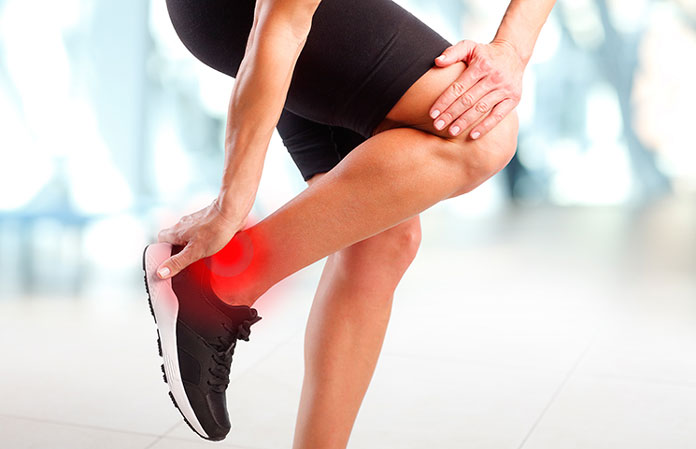
Differentiation 10: One Or Both Feet Turned Out
This occurs when your feet are turned outwards, away from the middle of your body.
Which muscles are too tight?
- Piriformis
- Other Various Deep External Rotators
Stretches to loosen tight muscles:
- Dancer's Stretch
- Lying Cross-Over
- Seated Glute Stretch
- It-Band Stretch
- It-Band Self-Myofascial Release
- Piriformis Self-Myofascial Release
Which muscles are too weak?
- Obliques
- Hip Flexors
Exercises to strengthen weak muscles:
- Cocoon
- Hanging Leg Raise
- Exercise Ball Pull-In
How To Improve Your Posture Final Words
If you’ve made it through this entire article, then you should know exactly what to look for when you examine your own posture. If you find any of the differentiations mentioned above, you can make use of the exercises we have suggested to get yourself closer to the ideal posture.
Remember, you will have to perform these exercises on a daily basis for a significant period of time. You can’t just perform them for a week and expect to have perfect posture, but if you stick with it you are sure to see results.






